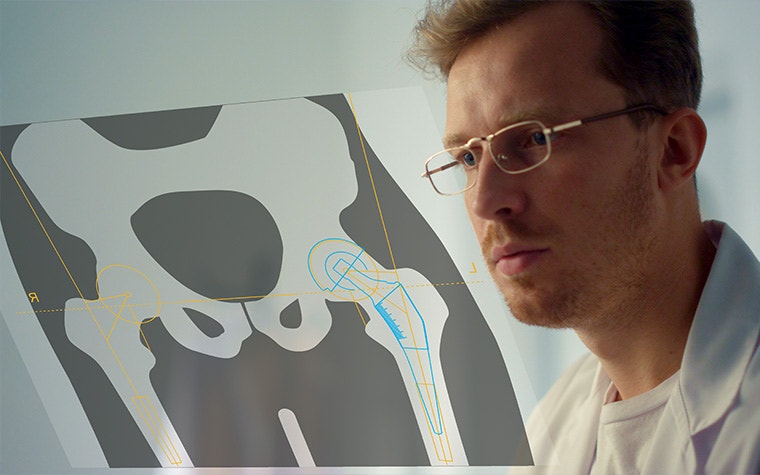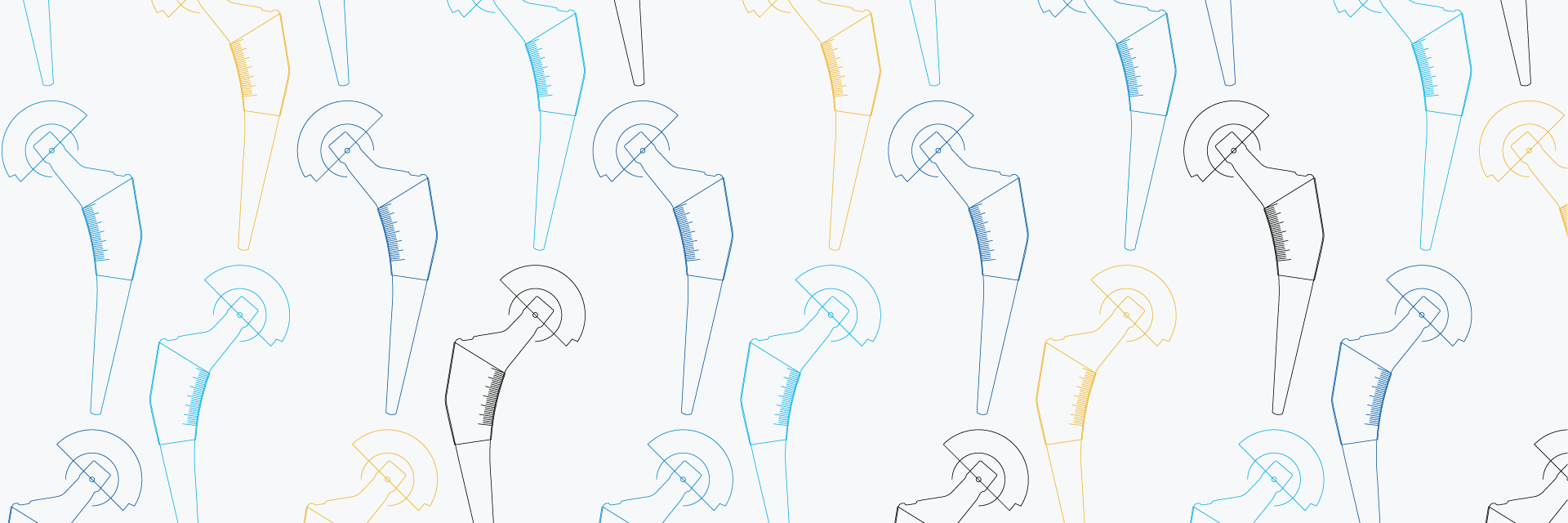EXPERT INSIGHT
10 Criteria to Consider When Selecting Orthopaedic Templating Software for Your PACS Tender

Orthopaedic templating software is essential to precisely and accurately plan and perform joint replacements, correct deformities, or manage fractures. When preparing for a picture archiving and communication system (PACS) tender, orthopaedic surgeons are often asked to create a list of detailed requirements for orthopaedic templating software that will be part of their PACS for the next 5 – 7 years. This article provides guidance on prioritizing evaluation criteria to select the best solution, making the decision-making process easy and stress-free.
1. User-friendliness
One of the essential features of a high-quality orthopaedic templating software program is user-friendliness. The software and orthopaedic templates should be easy to learn and use, allowing orthopaedic surgeons to quickly harness the tool’s full potential. Software that streamlines preoperative planning with automated workflows enabled by artificial intelligence (AI) is also a strong advantage. Straightforward and easy-to-use workflows allow orthopaedic surgeons to maximize their focus on patient care rather than manual and tedious tasks in the software.
2. A smart online implant library
Another critical factor is compatibility with various orthopaedic implants and instruments used by the hospital. Templates are often made of several components that should all be intelligent. For example, only permitting real-world matches and preventing the selection of incompatible template size options. Paying attention to this aspect is important because most orthopaedic software programs have remarkably simple templates.
The implant templates should also be stored in the cloud to avoid manual downloads or maintenance. A consistently updated library will provide instant access to the necessary templates.


3. Variety of procedures
The software must also consist of procedures and workflows that meet the needs of the whole orthopaedic department. Orthopaedic templating should include joint replacements, deformity corrections, pediatric procedures, spine assessments, and fracture management procedures. This variety eliminates the need for hospitals to purchase multiple software programs to accommodate different procedures.
4. Accuracy
Accuracy is essential for successful orthopaedic surgery, so high-quality orthopaedic templating software must provide accurate scaling, measurements, template sizing, and positioning to minimize errors during surgery and improve patient outcomes. The planning software should detect if calibration is outside the normal range to spot misplaced devices and prevent an inaccurate preoperative templating plan. The software must also identify and use reliable bony landmarks to get accurate measurements. Certain landmarks are more error-prone than others, so make sure the software prioritizes using the most reliable ones for basic clinical measurements that are least affected by the patient's bony anatomy position on an X-ray.
5. Training and support
Onsite and online interactive training and end-user support are two more essentials for orthopaedic software providers to enable proper planning. An educational portal with on-demand video tutorials and webinars is a plus and allows users to continuously learn at their own pace. Additionally, dedicated training for radiographers on positioning calibration markers ensures accurate X-ray scaling.
Finally, there should be 24/7 technical support to ensure optimal software installation, seamless integration with the hospital system, regular maintenance checks, software upgrades, and immediate responses to issues or inquiries.
6. Web-based PACS integration
Integration with other hospital systems, such as PACS and electronic health records (EHR), is crucial to seamlessly share patient data between systems and reduce the need for manual data entry. Today’s evolution from single to multi-facility healthcare centers has resulted in PACS vendors like Philips, AGFA, Fujifilm, Change Healthcare, and Merative building enterprise imaging solutions operating from the cloud.


In addition to integration with these PACS, templating software must also offer web-based deployment for easy access from any workstation with a web browser and hassle-free software upgrades that offer new features and orthopaedic planning tools. PACS vendors are the best resources for advice on which software is ideal for use with their system.
7. Security and data privacy
Managing patient data poses a significant concern when selecting PACS and orthopaedic templating software. The software should ensure compliance with regulations such as HIPAA and GDPR. Advanced authentication and security protocols are necessary to ensure that patient data is safe from unauthorized access or hacking attempts. Nowadays, most vendors use cloud systems like Google, Microsoft, or Amazon to benefit from their state-of-the-art data privacy and security technology.
8. Value for money
Hospitals should consider the cost but also keep in mind that choosing a lower-priced software program may result in compromised quality of the software or templates, availability of procedures, level of support, upgrade availability, or general functionality. Some orthopaedic templating software costs are split per module and procedure, and they can get expensive if all modules are bundled together. Some also charge extra for support or upgrades. So, to determine the value, make sure you have a clear view of the total package, including the costs for software and modules, maintenance, upgrade, and support.
9. Reputation
Reputation is a key factor to consider when selecting a software program, especially since this is a tool and service that ultimately impacts patients. A software program from a reputable vendor with high satisfaction from end-users will provide high-quality software and support, reducing the risk of issues arising during surgery. You can check the reputation of orthopaedic templating software with PACS vendors because they know which are the most complete, have the best integration, and offer the most experienced support.


10. Future-proof
And finally, selecting a software program with a clear roadmap for future development helps you feel confident that it will remain a viable long-term solution. As technology advances and patients’ expectations increase, more automation and advanced planning capabilities should be on the development roadmaps to provide faster, more accurate, and more precise plans. The software should also be able to adapt to changes in healthcare IT and hospital PACS environments.
In conclusion, choosing the right orthopaedic templating software program for a hospital tender requires careful consideration and prioritization of several factors, including user-friendliness, implant compatibility, cloud-readiness, and support. By evaluating these factors, hospitals can select a software program that will enable them to provide the best possible care to their patients and improve the efficiency and accuracy of their orthopaedic procedures.
L-103388-01
Share on:
You might also like
Never miss a story like this. Get curated content delivered straight to your inbox.
